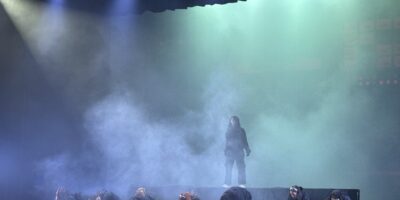Many hardcore (and some casual) Star Wars fans find the prequels a very touchy subject. And by ‘touchy’ I mean to say you’re going to see some very angry nerds faster than you can say ‘midichlorians’. But the prequels did create a curious dilemma— what is the ‘proper’ way to watch the saga? Two options became obvious: the release format (IV V VI I II III) and the chronological format (I II III IV V VI), but each comes with its own flaws, mainly in the way that each ruins the enjoyment of the other in some way. These drawbacks just didn’t sit right with many people, and so new watching orders were developed. Some very opinionated fans argue that the prequels should just be ignored entirely, but to that I politely disagree, as there are some very important and effective sequences in the prequels that make the original trilogy even more meaningful.
After some snooping around about the subject, I stumbled across what appears to have been the metaphorical gold mine, dubbed by the creator as the “Machete Order”. It proposes to watch the films in the order IV V II III VI. If your math skills are up to speed, you will notice that Episode I is gone, and perhaps the picture is starting to come into focus.
This sequence works for two reasons: first, it removes the confusing, contradictory and lacklustre mess that was The Phantom Menace. Secondly, it emphasizes the entire point of the prequels— to draw important parallels between Anakin and Luke, thus increasing the tension that builds up to the grand finale of Episode VI.
There are hour long rants of people pointing out just how bad The Phantom Menace was (Red Letter Media has a very… thorough breakdown of it) but suffice it to say it was bad even from a purely cinematic viewpoint. When it comes down to the plot of the saga, the film did nothing but unnecessarily complicate things, bore us with trade disputes and democracy, and give us many things that we would rather forget (re: Jar Jar Binks). The only moments of the film that even came close to acceptable were sub-par, such as the long-winded pod race and the emotionless duel with Darth Maul (mainly due to his and Qui-Gon’s lack of character depth). It also eliminates the obvious awkward age gap that Anakin had with Padmé and Obi-Wan– skipping directly to him well in his teens makes the relationships they develop little easier to believe without images of his happy child-self still in your brain.
However, what really sells many on the new order is how much the two halves begin to compliment each other. It establishes the universe in the ways audiences first saw it in A New Hope and builds up to the immense climax that was the end of The Empire Strikes Back, watching the development of Luke from a young, emotional farm boy to someone of great importance. When we go to Attack of the Clones and Revenge of the Sith, we see Anakin, also under Obi-Wan’s tutelage, take a similar path, and the audience obviously makes the connection between the two. The tension rises when Revenge of the Sith has Anakin exceed the parallel development with Luke, including his passage to the Dark Side and the resulting terror he instilled upon the galaxy.
This intense foreshadowing coupled with the unresolved tension from Episode V makes The Return of the Jedi — often considered the weakest of the original trilogy— wrought with anxiety and tension, as the obvious similarities between Anakin and Luke only leads to the logical progression that Luke might be fated to follow in his father’s steps. Luke mimics both his father’s manners and image throughout the film, and in the climax he is faced with the same decision his father had to make. If someone watched this encounter after only Episodes IV and V, this threat is very unconvincing, as Luke has been established as a skilled, hot-headed and courageous young protagonist, and thus unlikely to do anything of the sort. But after seeing his father, the emotional and brash child prodigy, do the exact same thing, the threat becomes more serious.
While the system has a few minor issues, as a few things are mentioned in Episodes II and III that directly reference the omitted episode, the overall impact seems phenomenal- almost Star Wars as it was intended to be seen. Now we only have to wait for the newest Disney films to shatter our system, not unlike the Death Star and Alderaan.




Leave a Reply